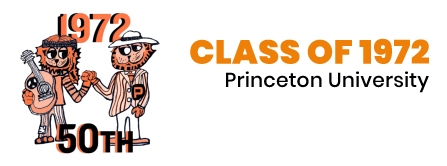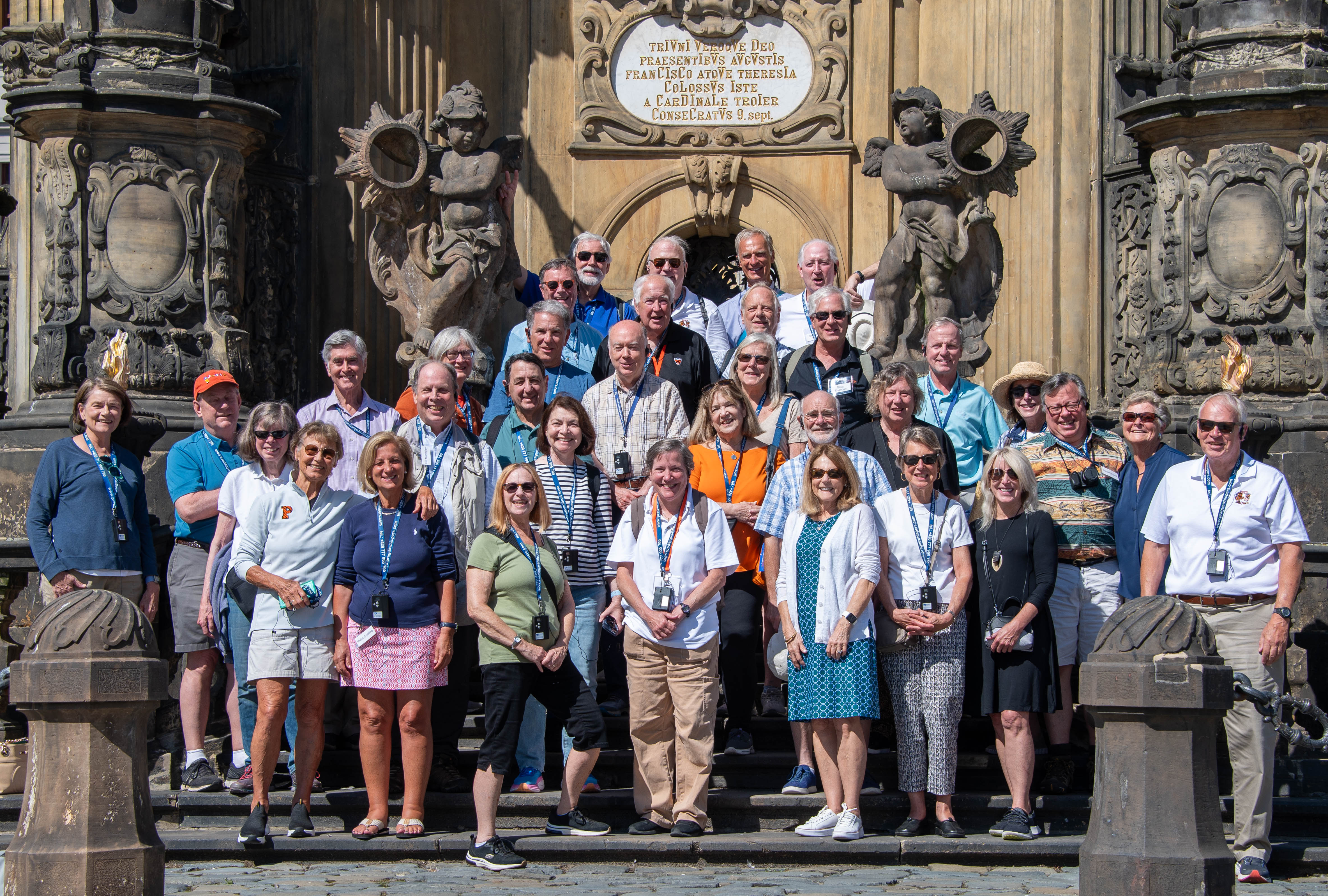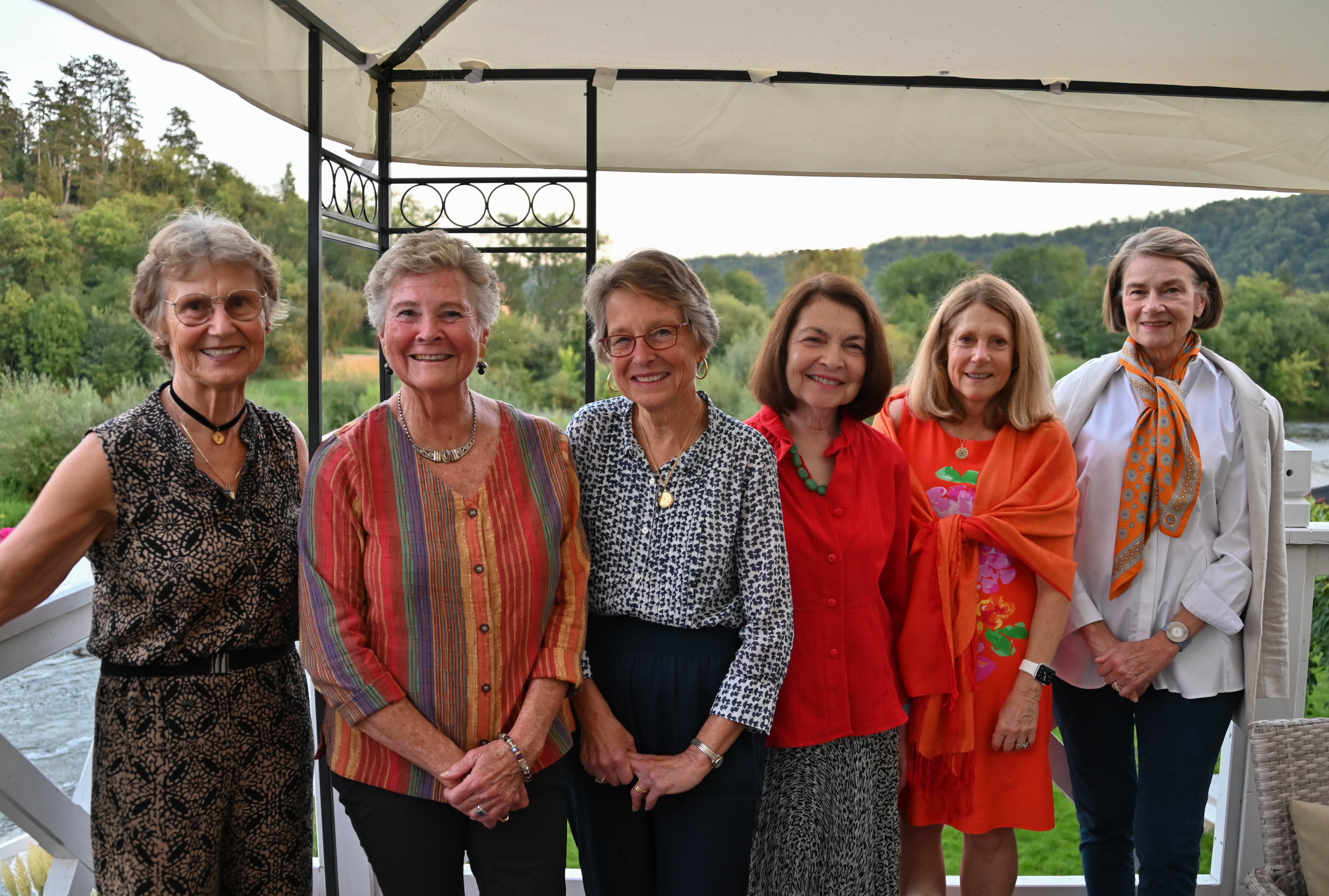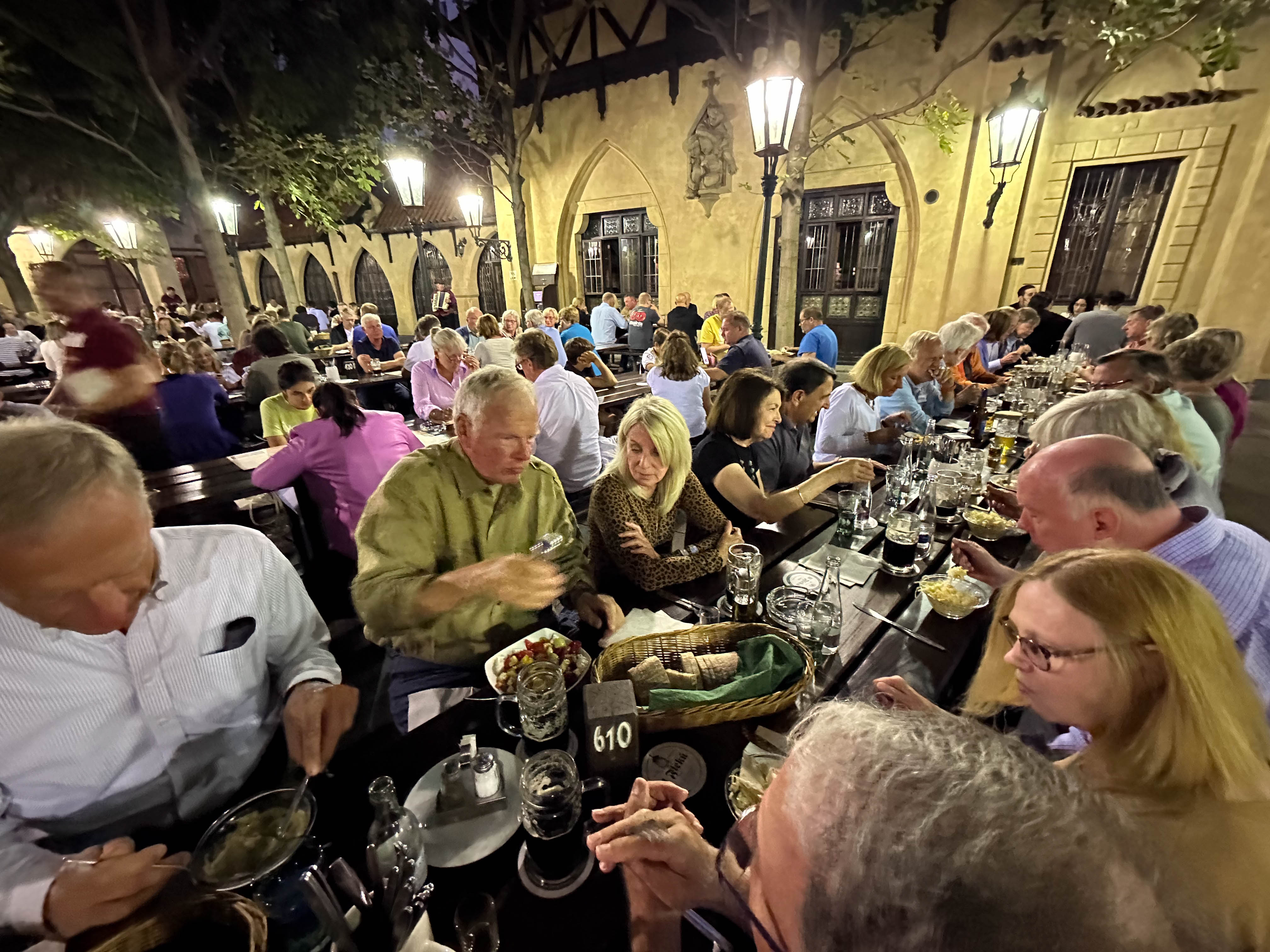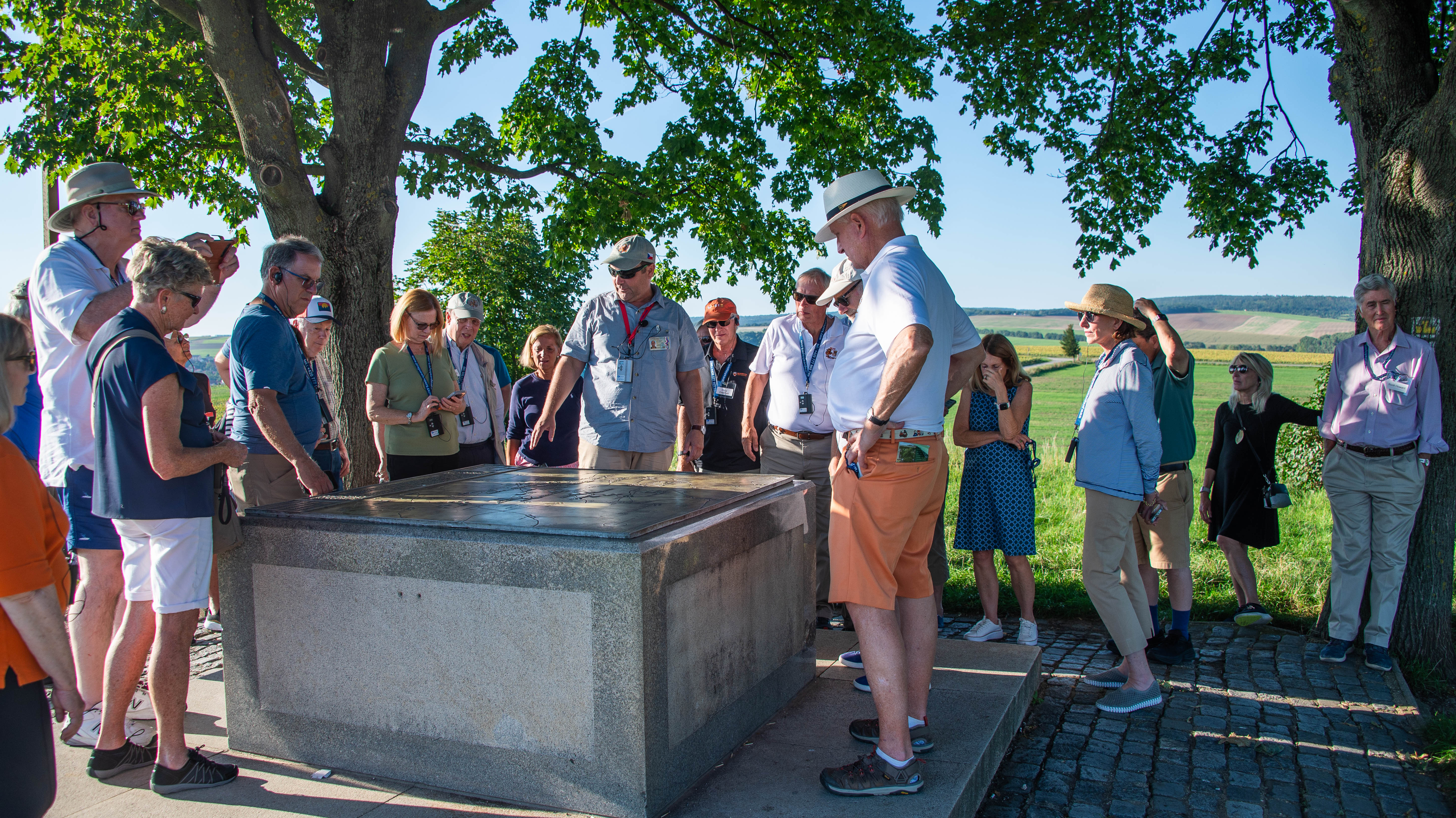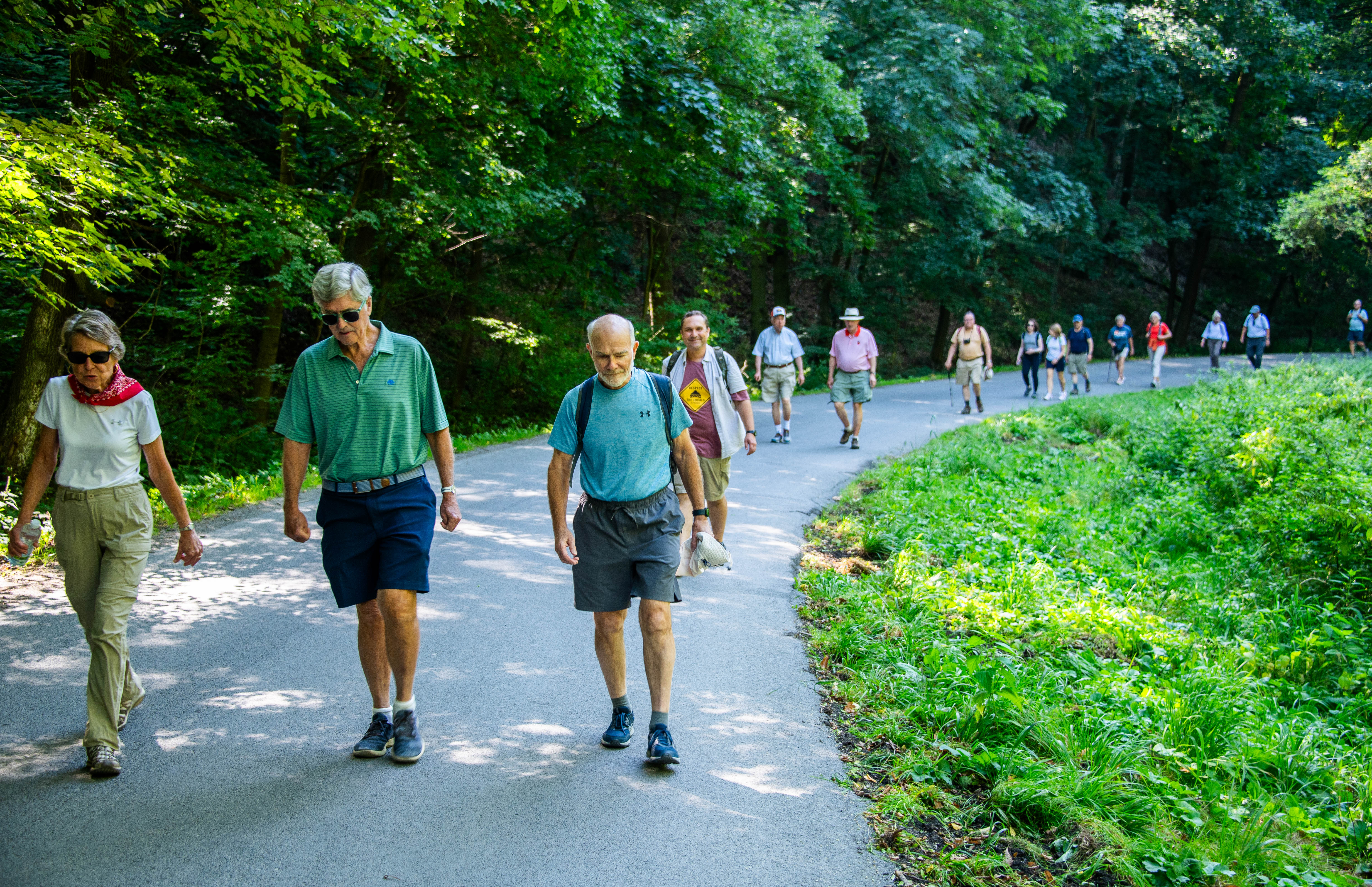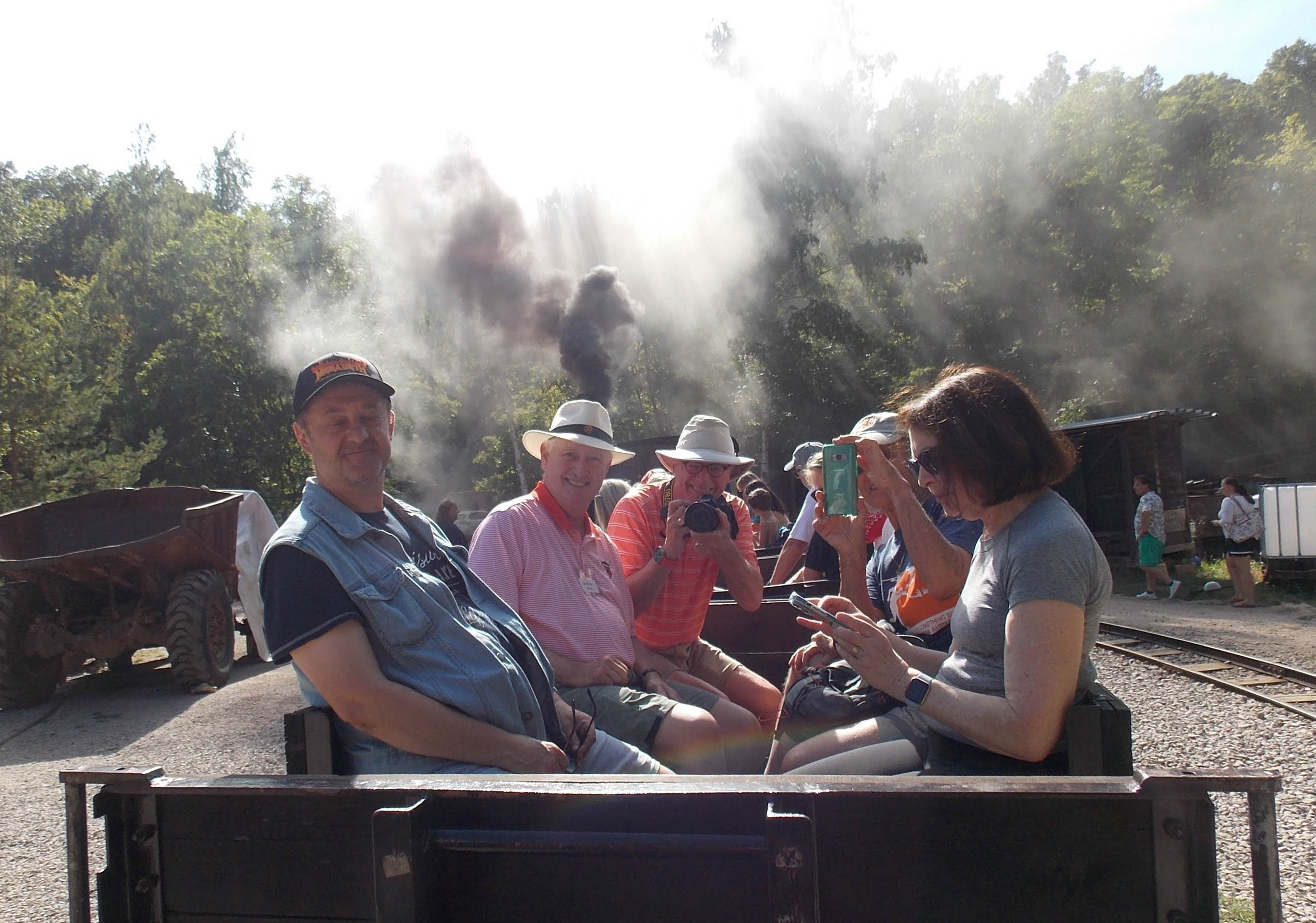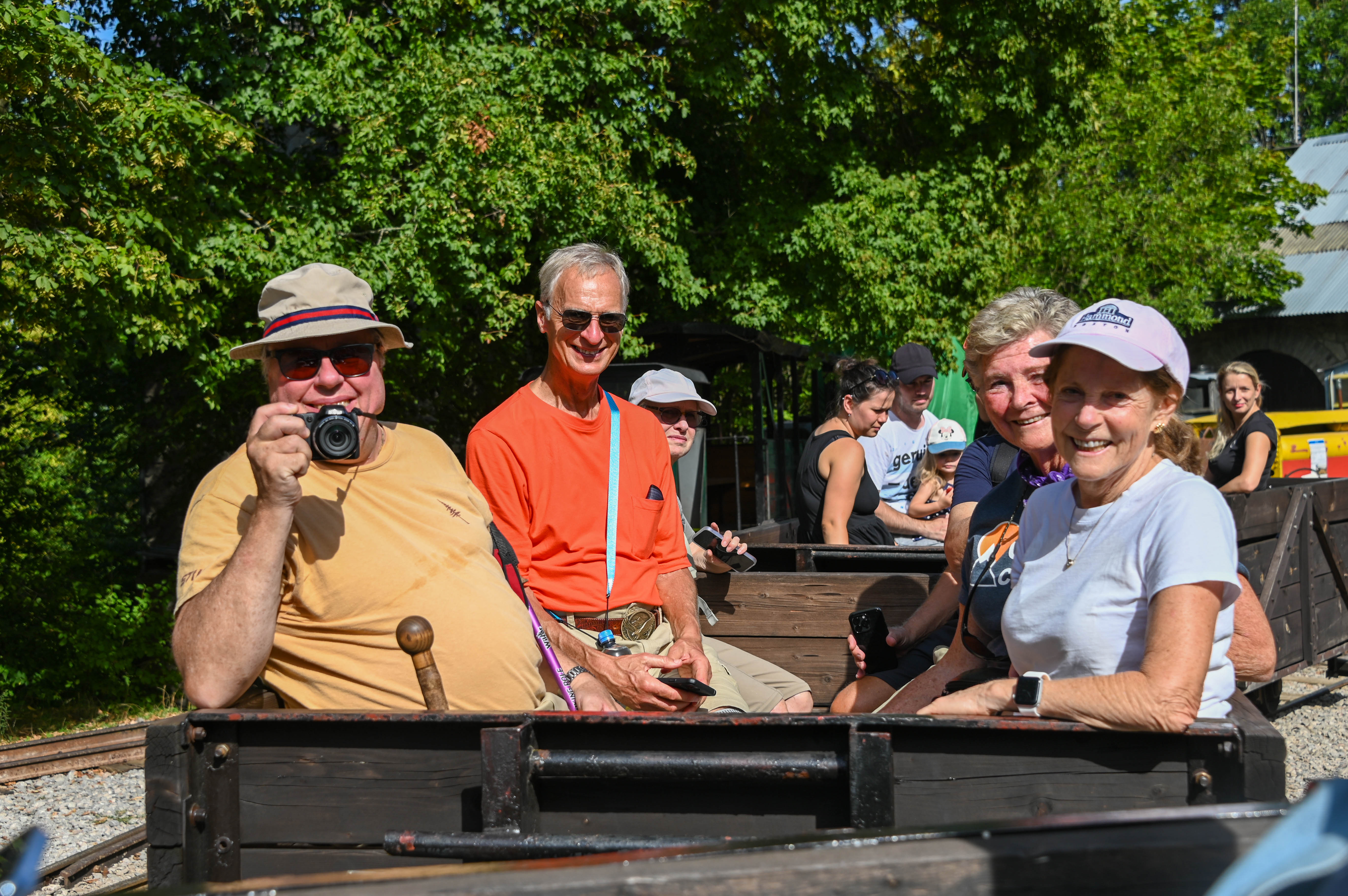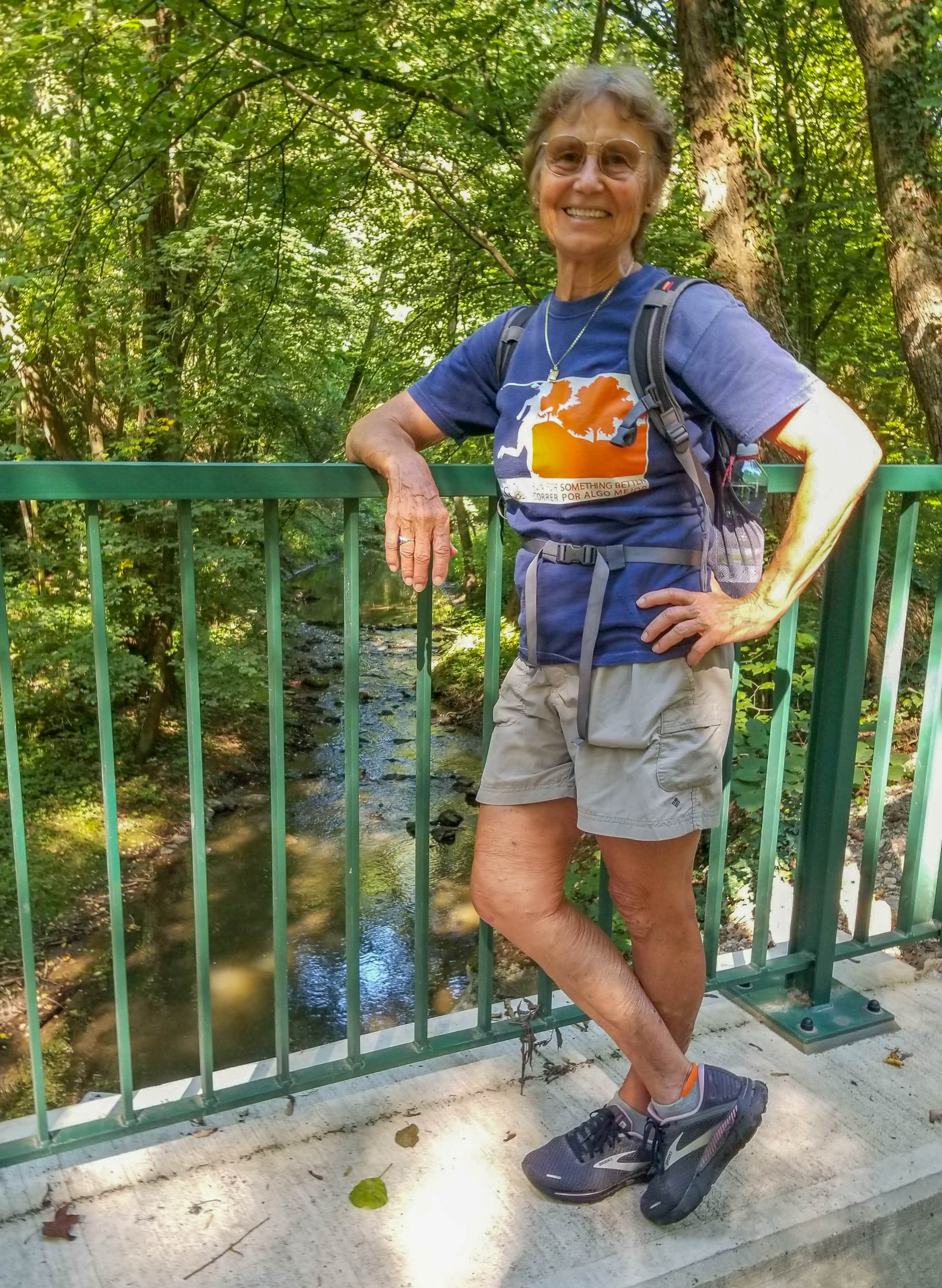 |
Dobry Den and Dumplings - Czech Republic: Part Dva By Rod McNealy and Bob Wright Let’s start with the numbers. This was the second 1972 Czech Republic excursion, with the first occurring in 2018 - the halcyon, pre-Covid, carefree travel days. The trip was beautifully planned and orchestrated by our esteemed classmate, Helena Novakova. An added delight was Vitek Kloucek, who served as our principal guide on this trip and the 2018 adventure. This was the longest 1972 class trip to date, at ten days. The trip included 35 classmates and partners. This included six female classmates - a record for any 1972 trip. They were: Mary Baldwin, Daryl English, Helene Fromm, Janet Howard, Helena Novakova and Christine Van Horne. Special thanks to Daryl for her tremendous outreach work in engaging female 1972 classmates! Doug and Joan Harrison, the McNealys, Daryl English and Barclay Foord, and Helena were repeat travelers from 2018.
Our headquarters hotel in Prague, where we began our trip, was the fun, “hip and happening” Mama Shelter Hotel - think a mix of “Virgin Atlantic, Aloft, Planet Hollywood”. Located in the newly gentrified Prague suburb of Holesvice, formerly occupied by numerous factories. Now “the” place to live in modern Prague. Mama Shelter was ideally located next to National Gallery - Veletržní Palace, a large indoor shopping center, and a beautiful and expansive city park (Královská obora Stromavka) housing the Prague Planetarium. John and Christine Van Horne and Rod and Patty McNealy were early Prague arrivals and visited the extensive and creatively displayed National Gallery exhibits. The Gallery also featured an ultra modern café, full of art students and tired tourists - the Gallery is huge! The hotel was also on a direct tram line into central Prague and the intrepid Cameron Smith and Bob Wright immediately ventured in to tour Old Town Prague. Bob went on an afternoon expedition to explore the expanse and beauty of the planetarium park as well. The trip officially began on Thursday evening, August 31, with most classmates arriving in Prague that day by air or train from the U.S. or from other European cities. A Mama Shelter rooftop cocktail reception and buffet dinner launched our Czech Republic adventure under a spectacular full moon. Our real adventuring started Friday, September 1 with a full day, including numerous stops in the complex included withing the walls of Prague Castle (St. Vitus Cathedral, the Old Royal Palace, and Golden Lane) and a walk through Mala Strana - the area immediately below the large, lovely, and rambling Prague Castle complex. Throughout, Vitek and Helena did a fantastic job of relating relevant Czech history, which included an unusually high number of “defenestrations”, so everyone avoided getting too close to upper-story windows! Following the downhill and scenic walk from Prague Castle and lunch, the group headed to the Museum of Slivovitz and some brandy tasting. To minimize any after-effects of the “tasting”, the group was treated to a boat trip on picturesque wooden boats for a tour of the Vltava River, which divides Prague into four districts. The extraordinarily full day concluded with an exciting folkloric evening at U Marcanú. The traditional Czech menu was delightfully complemented by a terrific display of Czech music and dance from various regions of Moravia and Bohemia. Former Nassoon Doug Eisenhart capped the evening by leading us in a rousing rendition of “Old Nassau”. This prompted another tour group present to sing THEIR school song, with the U Marcanú band looking on at all of this in wonderment! Still feeling the combined effects of jet lag, Slivovitz, and competitive “anthem singing”, the group launched our second full day on Saturday, September 2 with lovely Radka Vovetkova as our guide. The day’s theme was the Czech struggle against German and then Russian totalitarian regimes. We started with a visit to the nuclear bunker at Bezovka Parukárka. Thirty meters below Holy Cross Hill, this shelter was built in the 1950 - 1955 period at the direction of Soviet authorities. Located four floors below the surface and including three-meter-thick, steel-reinforced concrete walls, this shelter was built to accommodate up to 2,500 people for three days in the event of a nuclear attack. It is in excellent condition and could serve its original intended purpose today, and on short notice, if necessary. Touring it was a sober reminder that the nuclear holocaust both East and West feared during the Cold War sixty years ago remains a potential threat today. Resurfacing from the nuclear bunker, we headed to lunch at historic U Slovanske Lipy, the oldest pub in the Prague Zizkov neighborhood. Lunch featured THE traditional Czech meal of Svícková - basically pot roast, dumplings, gravy, root vegetables, and cranberry sauce. (Six months later, you’ll be hungry again!) Fortified, the group headed to Petschek Palace, an enormous “palace” in the center of Prague. It was originally a commercial bank of Julius Petschek and built between 1923 and 1929. However, its notoriety came after it was confiscated from the Jewish Petschek family and served as the Nazi Gestapo headquarters for the Prague region. Its basement vaults were converted to “interrogation” rooms (and torture chambers), from which few emerged alive. We also received a brief but compelling overview of Czech history from the immediate pre-World War II period. Notable was the exhibit of the large map of pre-war Czechoslovakia and pictures from the Munich Agreement of 30 September, 1938. Most striking was the famous photo of Munich Agreement participants from Germany, Italy, France, and Britain, who, without consulting Czechoslovakia, handed significant parts of the country over to Adolf Hitler. Stunning. This sobering day concluded with a visit to the Saints Cyril and Methodius Cathedral in central Prague. Here the Nazis cornered Czech paratroopers dropped into the country from Britain. Their assignment: assassinate Nazi Deputy Reich Protector Reinhard Heydrich, who had conducted a brutal and bloody occupation of Bohemia and Moravia. While the plot succeeded in killing the ruthless and cold-blooded Heydrich, he was replaced by an equally horrific Nazi official and terrible reprisals were conducted in revenge, including the destruction of two entire towns and their occupants. Sobering indeed. We then drove by the American Embassy, originally the home built in the 1920’s by Otto Petschek and the subject of “The Last Palace” by Norman Eisen, former Ambassador to the Czech Republic. Many spent that evening in quiet reflection with either a group visit to the Prague Opera or some of the lovely classical concerts conducted across the city in spectacular locations, such as the Klementinum, Mirror Chapel, and Lobkowicz Palace. Sunday, September 3 was a full day of hiking and trekking in an area in the beautiful Czech countryside in the northwestern part of the Czech Republic, near Dresden, known as “Bohemia Switzerland”. This included stops at Bastein Bridge, with continuation to Hrensko and the stunning natural arch formation known as Pravcicka Gate. After returning down the mountain, our bus transported us to Mezní Louka where we dined for lunch at the Hotel Mezní Louka. We then trekked from there to the Kamenice River. Any pre-trip conditioning really paid dividends, as the scenery was as lovely as the trekking was invigorating. Our second full day of outdoor adventure followed on Monday, September 4. Today’s destination was the “Czech Paradise” and it certainly lived up to its name. The journey included a hike to Valdstejn Castle. This location dates from the 13th century, with later buildings on the site from the 17th century, all built and owned by the Waldstein Family, whose name reoccurred throughout the trip, as did that of Saint John of Nepomuk, famous for failing to divulge the confession of the Queen of Bohemia. We then walked to Hrubá Skála for a luncheon at the Hrubá Skála Restaurant. After walking back to our bus and then returning to Prague, we enjoyed our last night in that city with another delicious and traditional dinner at the brewery U Fleku.
The group then returned to Mama Shelter, packed, and prepared for our departure on Tuesday, September 5 for the silver mining city of Kutná Hora. This city was once the largest producer of silver in Europe and it retains its medieval charm and scenic beauty in the St. Barbara’s Church, Jesuit College, Gothic Church, and Plague Column. We would see more of these throughout the trip. They were built by terrified citizens hoping for divine intervention against the early 18th century plague. A stark image of that period was the Sedlec Ossuary, which is said to contain skeletons and bones from over 40,000 residents whose remains had been exhumed during various construction projects over the centuries and are now presented here in various “artistic” displays.
From there, we could see the hill Herinky at 1,440 ft. in elevation above the town; we would end up hiking there. Before doing so, we visited an old limestone quarry at Solvayovy Iomi, toured the mining museum there, and rested as we rode an old steam engine train all through the quarry along narrow gauge tracks. From the top of hill Herinky, we enjoyed spectacular views of the countryside and the town below from which we had traveled.
TRIP PHOTOS ARE POSTED HERE. And for a quick and fun video put together by Mary Baldwin that compiles much of what we did into a series of snippets lasting less than nine minutes, you can click below. Here's to our intrepid leader, who made all of our incredible experiences possible -- thank you HELENA!!
|
 |
